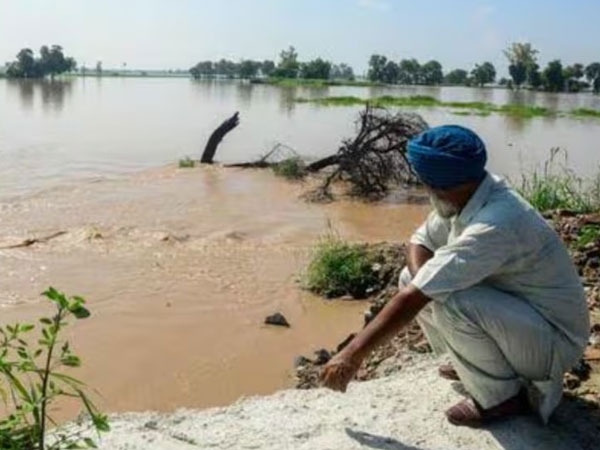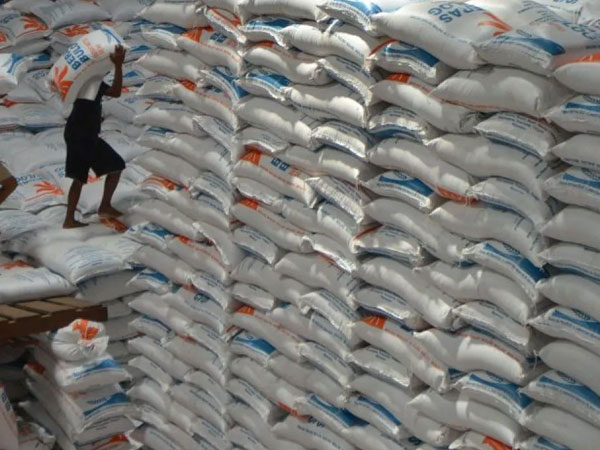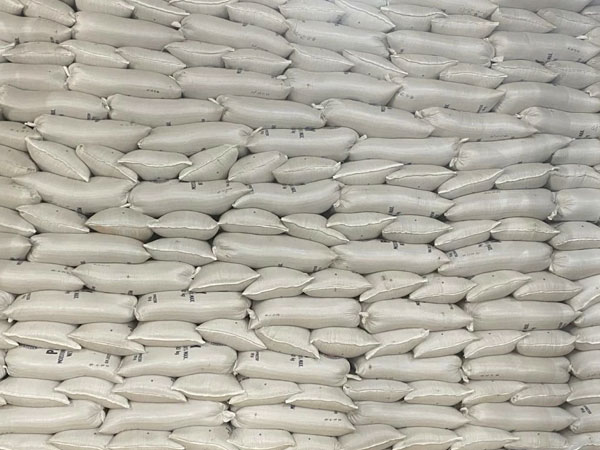 Excessive rains in Maharashtra, Punjab, Rajasthan, and other states threaten Kharif 2025-26 output, slowing harvesting and potentially delaying Rabi sowing. Govt projects modest 2.4% growth in foodgrain production amid flood damage to paddy, soyabean, tur, bajra, and cotton.
Excessive rains in Maharashtra, Punjab, Rajasthan, and other states threaten Kharif 2025-26 output, slowing harvesting and potentially delaying Rabi sowing. Govt projects modest 2.4% growth in foodgrain production amid flood damage to paddy, soyabean, tur, bajra, and cotton.
Excess rains in western and eastern parts of the country since mid-August have inflicted considerable damage to standing crops in many areas, and may necessitate a significant downward revision of the record crop estimate for kharif 2025-26. With the fields filled with slit in many areas, harvesting of kharif crops has slowed and rabi sowing may get delayed.
Though no precise estimate of the crop losses has yet been made, the extent of damage is the largest in Maharashtra, where nearly half of the crop area has come under floods (see chart). Production of paddy, soyabean, tur, urad, sugarcane, bajra and cotton could be impacted, according to sources from the farming and trading communities in different regions.
Moreover, there are concerns about more rains in the coming days, with the weather department indicating heavy rainfall over Madhya Maharashtra, Marathwada, Telangana and coastal Andhra Pradesh till September 30. A fresh low-pressure area is likely to form over north and adjoining central Bay of Bengal on Thursday.
Maharashtra and Other States Worst Hit
In the last one week, surplus rainfall over usually rain-deficient Marathwada and Vidarbha regions of Maharashtra has impacted crops in over 7 million hectare (Mha) out of the state’s sown area of 14.4 mha. Dattatray Bharne, the state’s agriculture minister, said on Wednesday that rains this month have caused more losses by impacting crops in about 30 of the 36 districts. “A crop loss survey is under way on a war footing with the help of the revenue and agriculture departments,” he said.
This came after crops like paddy and bajra were severely hit because of surplus rainfall in Punjab and Rajasthan. Even some crops in Karnataka have been hit.
While the inter-ministerial teams consisting of officials from Union ministries including agriculture, animal husbandry and home have visited Punjab and Jammu and Kashmir to assess the damage to the crops, several teams will be sent to other states if the rainfall continues unabated, sources said.
Impact on Paddy and Rabi Sowing
“As per as preliminary reports, 0.15 Mha out of 3 Mha of paddy crop has been impacted by the submergence in Punjab,” PK Singh, agriculture commissioner, told FE.
Trade sources said sowing of rabi crops like wheat in a few districts of Punjab may be delayed.
Suraj Agarwal, CEO, Rice Villa Group, a Kolkata-based rice exporter, said: “Right now, the paddy crop in West Bengal is around 3-4 feet high, where it remains strong and unaffected by the current rains.” The heavy rains in the state, the biggest producer of rice, has largely been in Kolkata and nearby areas.
Taking into consideration the impact of flood and excessive rainfall major across regions which has impacted kharif crops, the government last week had projected a modest growth of 2.4% in foodgrain production to 362.5 million tonne (MT) for the 2025-26 crop year (July -June) compared to 353 MT of production in 2024-25. This is despite record kharif sowing of crops at 111.08 Mha reported this year.
Earlier, the government had forecast kharif output for this year at a record 171.3 MT, compared with 168 MT in the last season.
Crisil Intelligence in a recent report had stated that persistent heavy rainfall through August in Punjab, Haryana, Karnataka, Andhra Pradesh, and Telangana have impacted several kharif crops such as paddy, cotton, bajra, cotton, maize and gram.
The gross value added (GVA) in “agriculture and allied sectors” recorded a healthy growth of 3.7% in the first quarter of the current fiscal. In 2024-25 too, the sector performed well with GVA growth of 4.6%. Analysts are yet to make any assessment of the impact of kharif crop damage on GVA, or the rural economy that is believed to be looking up. GVA is a function of not only crop output, but prices fetched by farmers and livestock breeders, where government procurement and market dynamics will also play crucial roles.














© Copyright 2025 The SSResource Media.
All rights reserved.